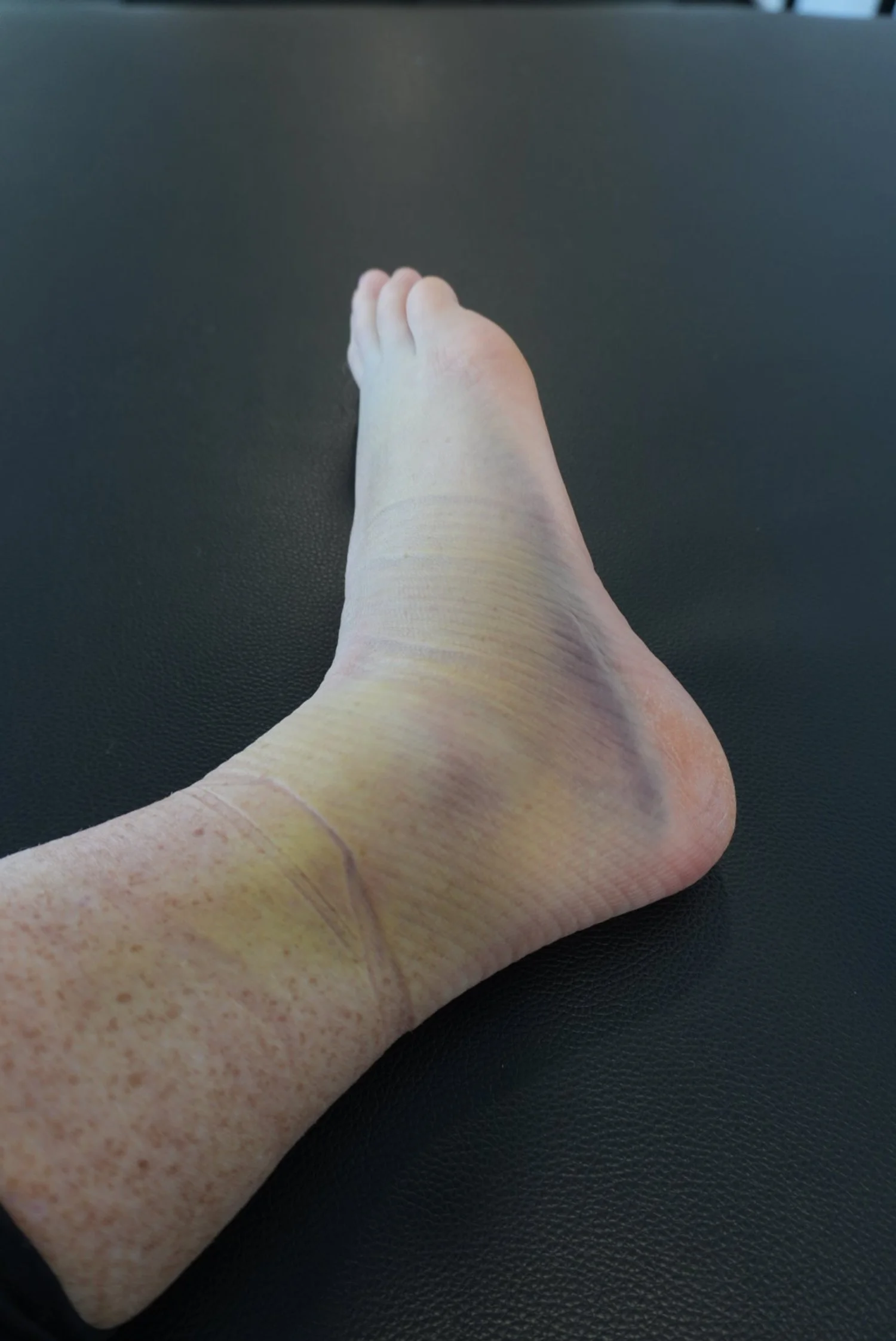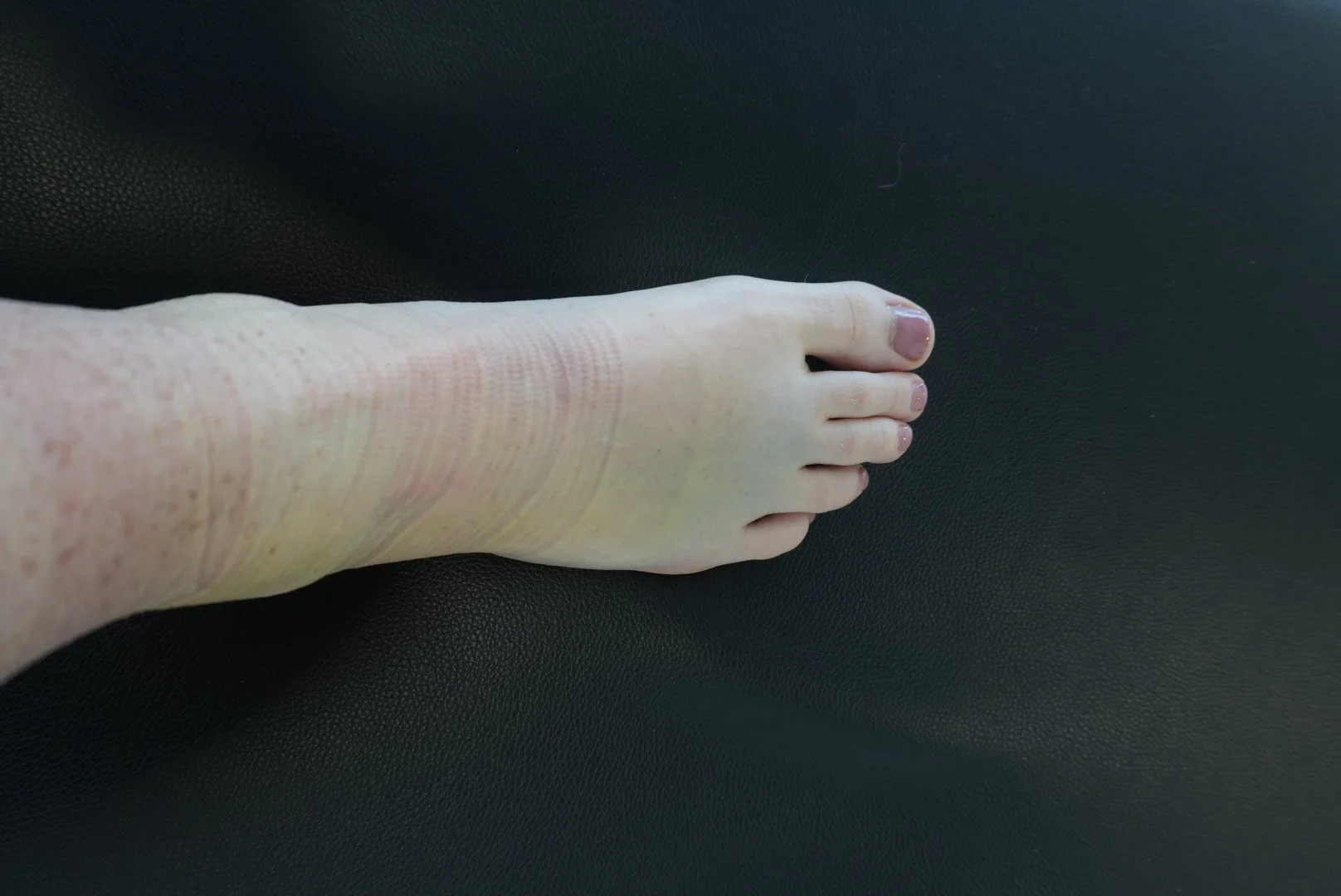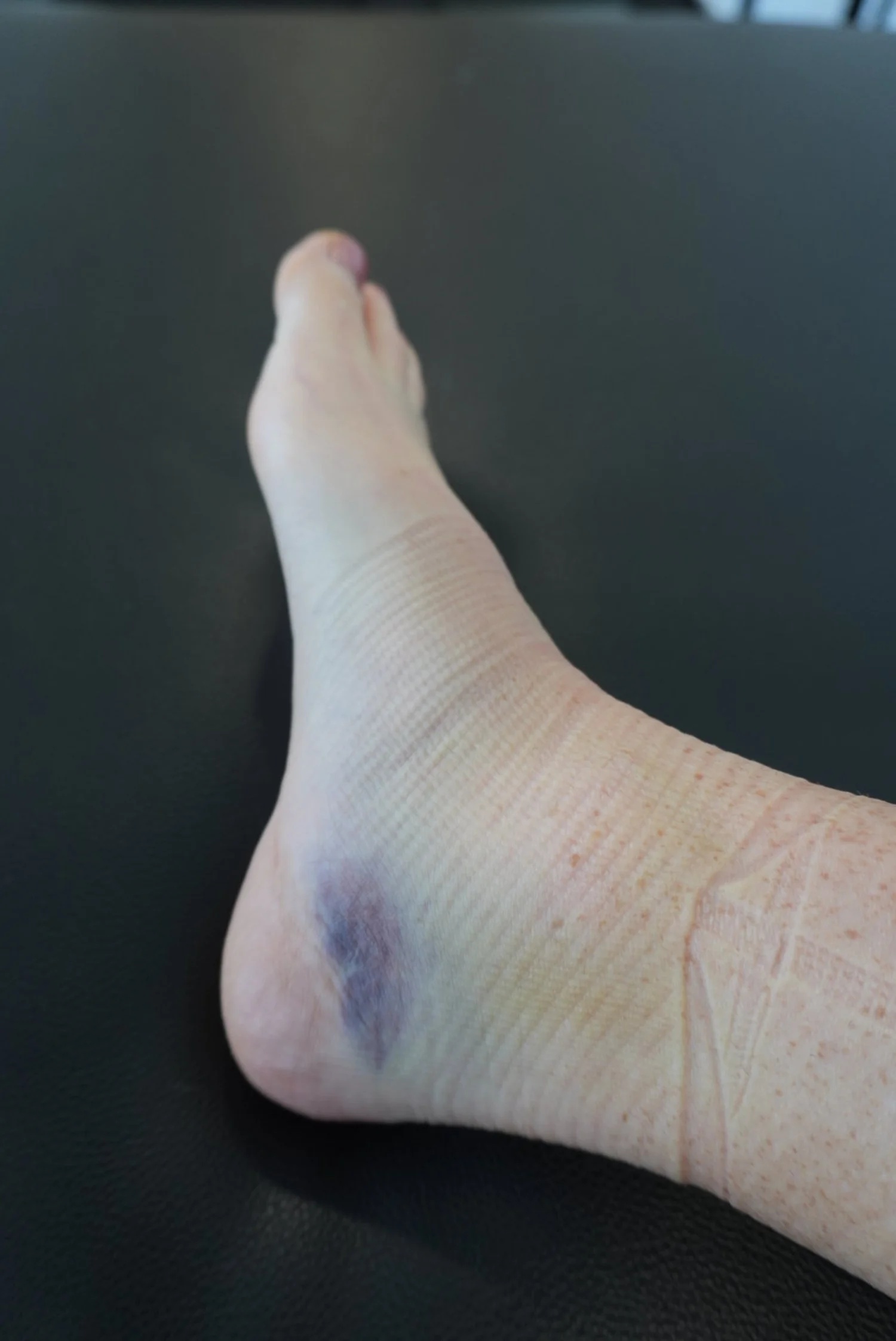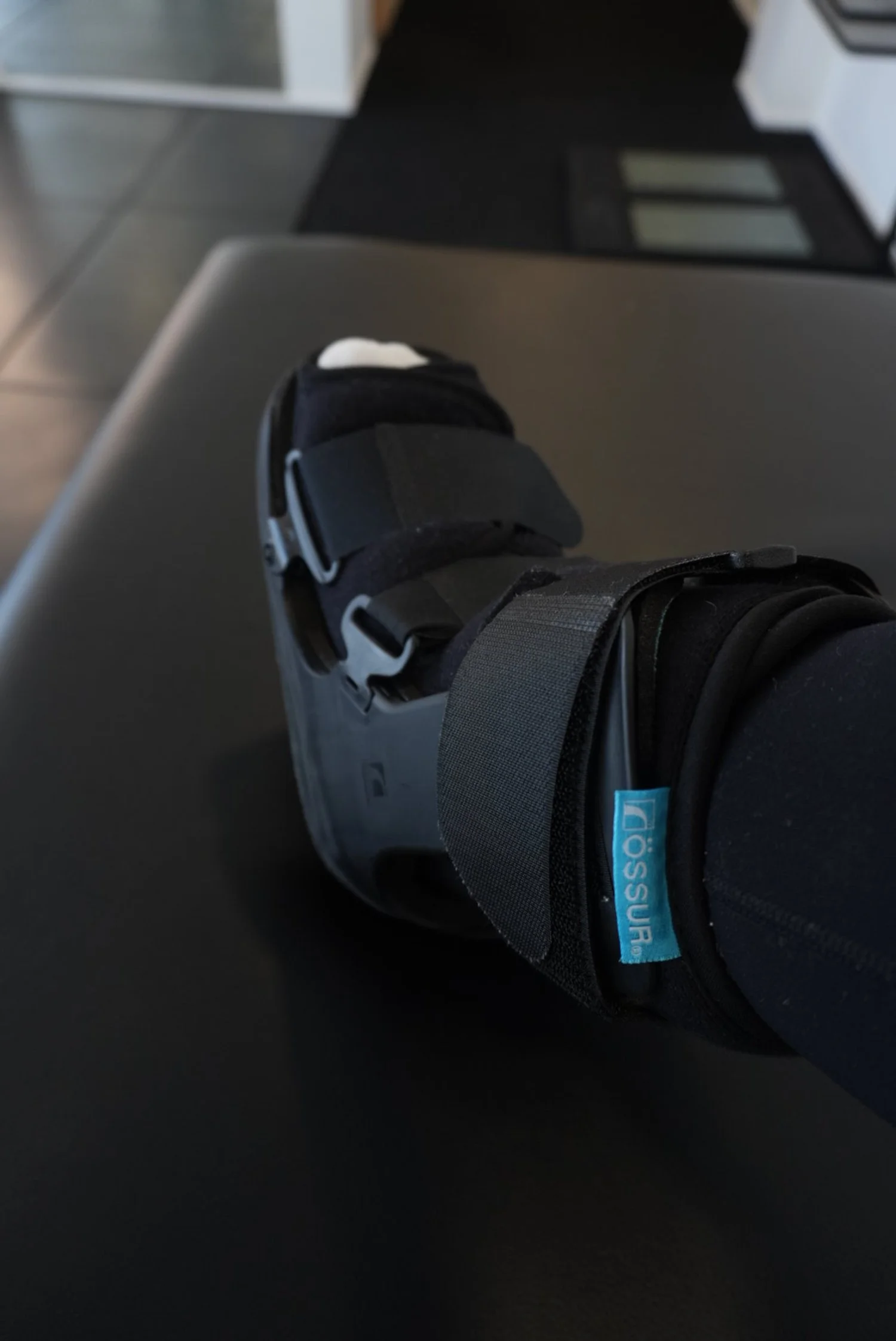Week 1 Post-Ankle Sprain: What I Did & What Rehab Looks Like
“Is this really happening?” That was my first thought.
You always think, that won’t happen to me, until it does.
One second I was mid-testing on the force decks, focused, in the zone, the next, I was on the floor with an ankle that looked like it had swallowed a tennis ball. I knew instantly this wasn’t a “walk it off” kind of roll… this was a fold. Cue that hot, sick feeling you get when your brain catches up with your body.
Since then, I’ve had so many kind messages and a lot of curiosity, so I thought I’d share what the first week post-injury has really looked like. The real stuff. The limping, the bruising, the quiet frustrations… and of course, the rehab foundations.
📆 Day 0–1: Initial Response
I won’t lie, the first 24 hours were rough. I went straight into “get your sh*t together” mode: moon boot on, Tubigrip wrapped, elevation, ice every few hours like it was my part-time job. Even though I knew what to do clinically, emotionally I was gutted. I had just been getting into a good training rhythm again, and now I was back at square one. I gave myself permission to feel frustrated. I think that part’s important, to let yourself be human, not just a health professional. Pain was pretty constant those first 24 hours, especially with weightbearing or any movement of the ankle. I was honestly a bit rattled, but I knew the worst thing I could do was ignore it or "walk it off". It was a weird emotional mix, half physio brain kicking into gear, half just… a person feeling pretty flat. This wasn’t in the plan. But I knew if I let myself spiral, I’d make dumb choices. So I focused on what I could control.
📆 Day 2–4: Swelling, Soreness & Setting the Foundation
By Day 2, the bruising had started to creep in, that deep purple wrapping around the lateral ankle, and some unexpected bruising medially too. Classic signs of ATFL involvement, maybe more. I got an X-ray right away (clear, thankfully), and booked an ultrasound to confirm soft tissue damage. Still waiting on those results, hopefully early next week. But here’s the thing: life doesn’t stop just because you’re injured. I still had a full client list, admin to do, and a business to run. I couldn’t afford to just lie on the couch with my foot up all day, as much as I knew that would help. So I adapted. I shuffled around the clinic in my moon boot. I sat during treatments where I could. I moved slower, but I kept showing up — with boundaries, but still present. That in-between space was tough. I wasn’t functioning at 100%, but I also couldn’t fully rest. There were moments of guilt too — like, shouldn’t I be doing more? Shouldn’t I just push through? But I kept reminding myself that healing isn’t just physical. It’s mental, emotional, and logistical.
📆 Day 5–7: Transitioning Out of Protection Mode
As the week progressed, things shifted. The swelling started to calm down — not gone, but less puffy. The bruising had travelled, migrating further into my foot (textbook), and pain became less widespread, more pinpointed. I could feel the body doing its job. Healing.
I still don’t know the full extent of the damage (waiting on that ultrasound), but based on how it happened and what I’m feeling, I’m anticipating at least a torn ATFL, and probably more. So for now, it’s about staying in the moon boot and respecting the tissue healing timelines. I’ve committed to two full weeks of offloading — which isn’t easy when you're used to being go-go-go — but I’m all in. While my lower body is on a break, I’ve been training upper body in the gym, getting a good sweat, lifting what I can, and keeping my head clear. Also prioritising nutrition and sleep for recovery.
Movement is medicine, even when it’s modified.
💭 REFLECTIONS FROM THE WEEK THAT WAS
Week 1 was all about acceptance, adaptation, and doing the basics really well. No heroics, no shortcuts.
This week taught me a lot. Not just about the injury, but about myself. It reminded me what it’s like to be the one in pain, the one making the trade-offs, the one questioning “Is this pain okay?” and “Am I doing enough?” I think every physio should go through injury at some point. It gives you perspective. Empathy. There were tears. Moments of doubt. And then moments where I felt proud of handling my week. I know there’s no quick fix. But there is a smart way through it. And I’m taking it one booted step at a time. Week 2 will be about confirming diagnosis, and then mapping out a structured progressive plan. Rehab won’t be linear — I’m prepared for that.
If you’ve been injured too — recently or in the past — I see you. It’s hard. But you’re not alone. And you will come out stronger.
Stay tuned for more
——
Sharne Tiller
Founder | Physiotherapist | Ex-Athlete, Always
The Joint Collective




